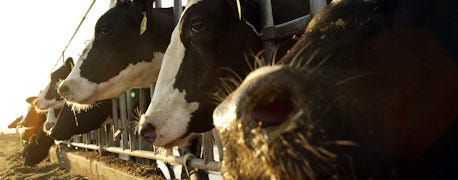January 24, 2016

Poultry continues to be the species people want to consume, according to the fifth annual Alltech Global Feed Survey released Jan. 22.
With no restrictions in terms of culture or religion, not surprisingly poultry demand is growing faster than any other species, said Aidan Connolly, chief innovation officer of Alltech, who headed the survey.
Nearly half, 46%, of total global feed manufactured is manufactured specifically for broilers, egg layers, turkeys, duck and other fowl, the survey found.

Global survey offers insight into feed demand for all livestock and poultry species.
But all feed tonnage is growing. The survey said global feed tonnage grew by 1.5% from 2014 to a total of 995.5 million metric tons produced in 2015. The industry has grown by 14% over the past five years, Connolly said.
Survey methods
More than 600 Alltech salespeople collected data from more than 32,000 feed mills in 131 countries during December 2015. They are measuring feed that goes through a feed mill and the survey does not include forages. Corn is the primary cereal used, at 76%, with wheat in second at 21 percent. Soybean meal is the preferred protein, the preference of 96 percent of countries surveyed.
In a conference call, Connolly likened the feed industry to the canary in a coal mine, saying the industry indicates in advance of statistics when a problem looms.
“The feed industry is an excellent barometer of economic health and, based on our five years of data, predicts economic growth more accurately than many other indices,” Connolly said in a media statement.
The top 10 feed producers in the world remained unchanged, with China leading the pack. Rounding out the top 10 are the United States, Brazil, Mexico, India, Spain, Russia, Germany, Japan and France.
Connolly expects India to move into the fourth spot in next year’s survey, saying their feed production is up over 7% this year and up 10% over last year.
While China is the leader, feed production dropped 2% from last year, with 179.930 million tons manufactured in the country’s 8,550 feed mills.
For the third year in a row, the number of mills in China decreased.
“The Chinese, in particular, see a benefit of having fewer feed mills—lower cost, more efficient and easier to control from the perspective of traceability and food safety,” Connolly said in a media statement.
The number of feed mills in the United States and Brazil are also declining.
The U.S. produced 172.730 million metric tons from 6,012 feed mills (6,718 mills in 2014) and Brazil manufactured 68.7 million metric tons from 1,556 feed mills (1,698 mills in 2014).
Global value
The value of the global feed industry is estimated at $450 billion, based on average prices. It has declined with the price of corn and soybeans, Connolly said.
Pig feed production was down 2%, at 253.53 million tons. Aqua, at 35.47 million metric tons, is down 5%, but Connolly suspects this relates to data collection rather than a specific decline given that aqua feed production has grown at 19 percent overall in the past five years.
Ruminant feed production, which includes beef and dairy, was up 3%.
Pet food production was up 4% at 22.59 million tons, which Connolly attributed to more countries reporting. Equine feed production, at 8.22 million tons, declined 2%, which Connolly said is not representative of what happened. Rather, the equine feed market is flat, he said. Both the equine and pet food market are highly effected by the economy.
The Global Feed Survey outlines Alltech’s estimate of the world’s feed tonnage and trends and is intended to serve as an open information resource for policy and decision makers and industry insiders.
Source: Alltech
You May Also Like




